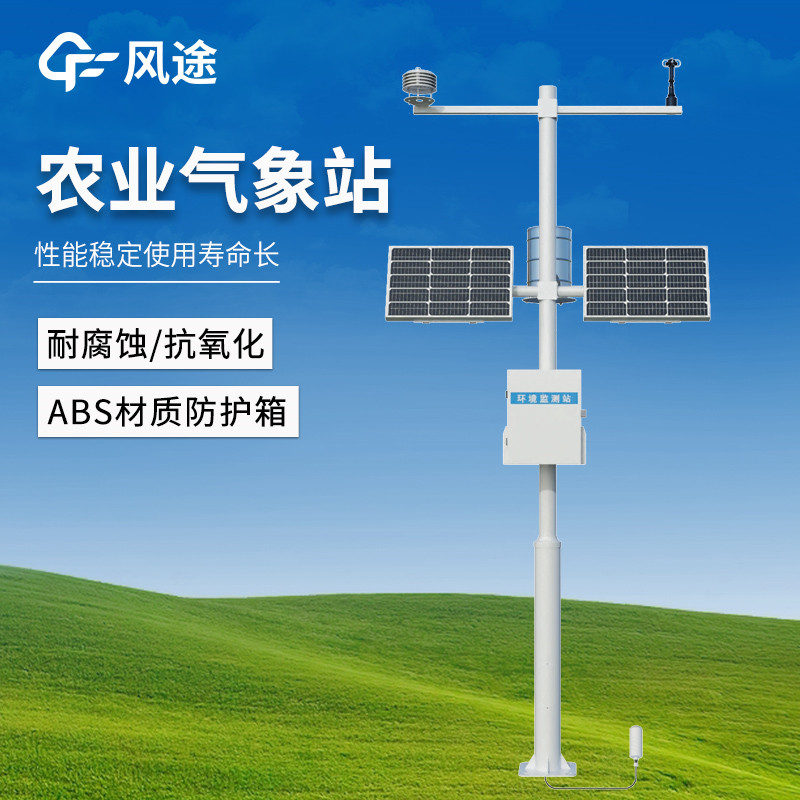Tianqiong Sensor IOT Technology Co., Ltd
Sales Manager:Ms. Emily Wang
Cel,Whatsapp,Wechat:+86 15898932201
Email:info@fengtutec.com
Add:No. 155 Optoelectronic Industry Accelerator, Gaoxin District, Weifang, Shandong, China

Sales Manager:Ms. Emily Wang
Cel,Whatsapp,Wechat:+86 15898932201
Email:info@fengtutec.com
Add:No. 155 Optoelectronic Industry Accelerator, Gaoxin District, Weifang, Shandong, China
time:2025-05-19 09:34:07 source:Weather Station viewed:161 time
Smart agriculture emerges from the deep integration of modern technology and agriculture. Through technologies like the Internet of Things, big data, and artificial intelligence, it achieves full-process information perception, intelligent decision-making, automatic control, and precise management in agricultural production. This helps improve agricultural production efficiency, reduce costs, enhance competitiveness, and ensure the quantity and quality safety of agricultural products. Meteorological factors play a critical role in the development of smart agriculture.
Meteorological conditions have a comprehensive impact on agricultural production. Meteorological elements such as light, temperature, precipitation, humidity, and wind speed are directly linked to crop growth, yield, and quality. Suitable meteorological conditions can promote crop photosynthesis, nutrient absorption, and growth, thereby increasing yield and improving quality. In contrast, adverse meteorological conditions may lead to stunted crop growth, the spread of pests and diseases, and the occurrence of natural disasters, causing huge losses to agricultural production. Therefore, accurately and timely obtaining farmland meteorological information is of great significance for rationally planning agricultural production, scientifically managing farmland, and enhancing agricultural benefits.
The Agricultural Environment Monitoring System is a key tool for acquiring precise meteorological information. Take Fengtu's FT-NQ14 Agricultural Environment Monitoring System as an example. This is a high-standard device capable of round-the-clock online monitoring. It consists of five components: meteorological sensors, a data collector, a solar power supply system, a vertical pole support, and a cloud platform. It features high integration, low power consumption, easy installation, and suitability for field monitoring. The meteorological sensors can accurately collect meteorological data closely related to agricultural production, including air temperature and humidity, light intensity, wind speed and direction, and rainfall. The collector has a static power consumption of less than 1mA, with a flexible data upload interval adjustable from 1 minute to 1,000 minutes. Through the standard GPRS networking, data is transmitted in real time to the cloud platform. Based on a CS architecture, the cloud platform supports direct access via mobile phones and PC browsers without additional software installation. It also enables multi-account and multi-device login, providing functions such as real-time data display and historical data dashboards. Data is stored on cloud servers, ensuring stability, reliability, and easy expansion. The platform also supports map-based display, allowing users to view device information conveniently.
With the Agricultural Environment Monitoring System, farmers can keep track of real-time meteorological changes in farmland and arrange agricultural activities such as irrigation, fertilization, and pest control reasonably based on meteorological data. This enhances the scientific and precise nature of agricultural production, contributing to the better development of smart agriculture.

While traditional environmental air quality monitoring stations (national and provincial control points) provide accurate data with legal validity, their high construction and operational costs result in insufficient spatial distribution density. This sparse layout primarily serves regional macro ai...
In many fields such as meteorological observation, traffic management, environmental monitoring, and aerospace, visibility is an extremely critical indicator. For example, in the aviation sector, the visibility around airports directly affects the safety of aircraft takeoffs and landings. In the eve...
Currently, the situation of urban atmospheric pollution is becoming increasingly complex, and traditional methods for monitoring atmospheric pollution sources are facing numerous challenges. The existing national control monitoring system for ambient air has problems such as a small number of monito...
The LCD screen of FT-FB01S Industrial Weather Station presents users with a clear and intuitive data display interface. The high-definition color screen can clearly present various collected meteorological data, such as wind speed, wind direction, air temperature, air humidity, atmospheric pressure,...